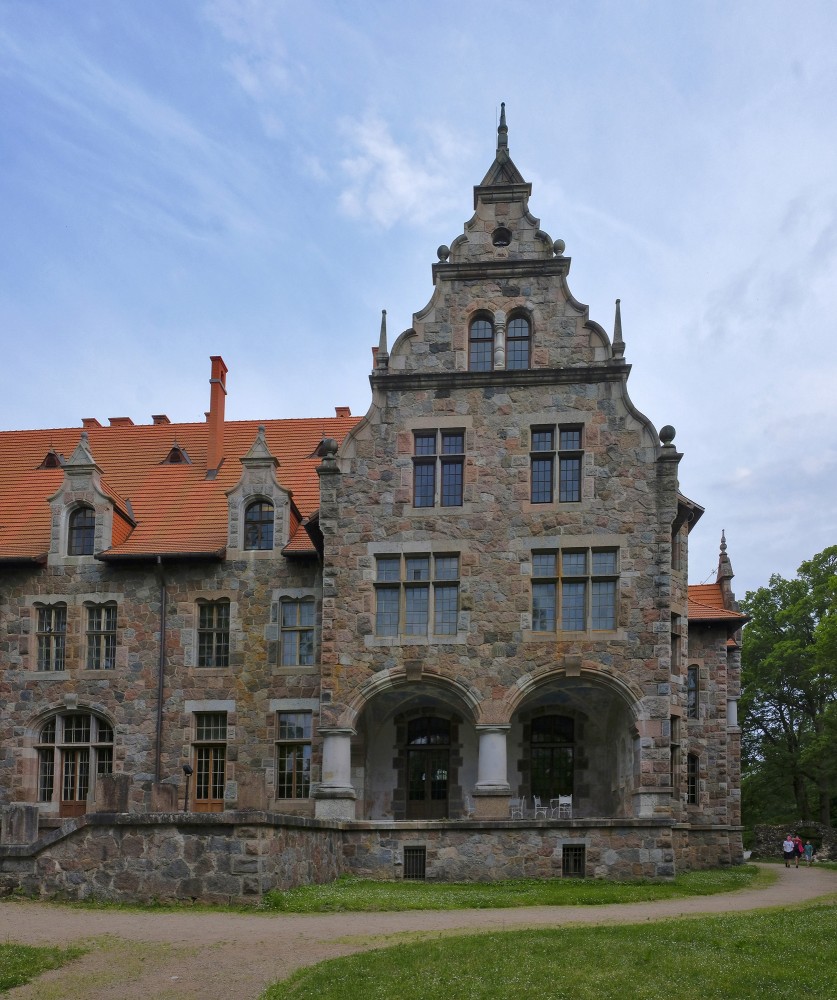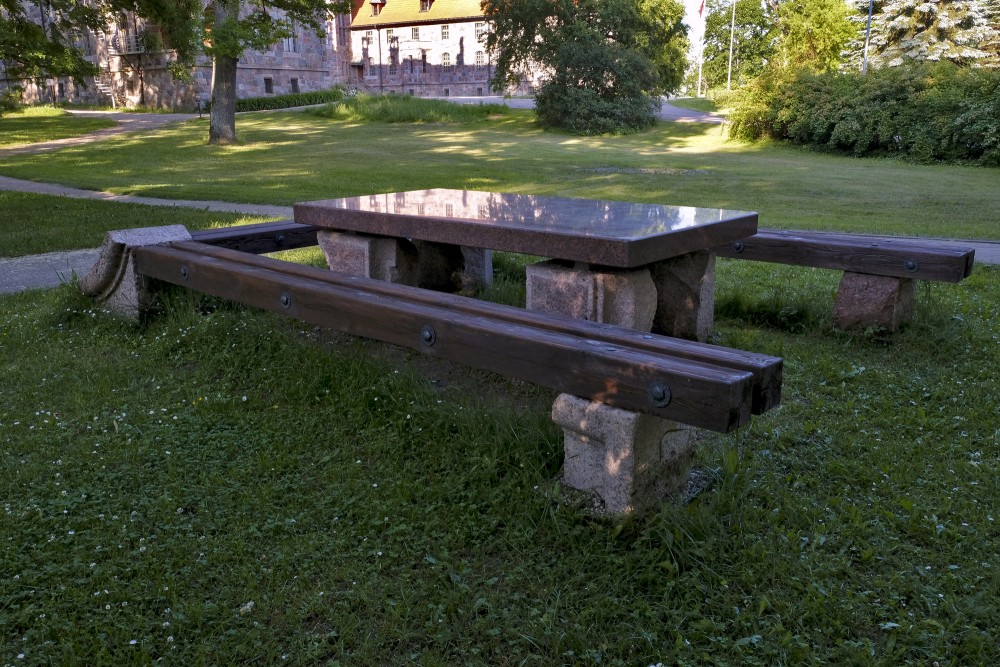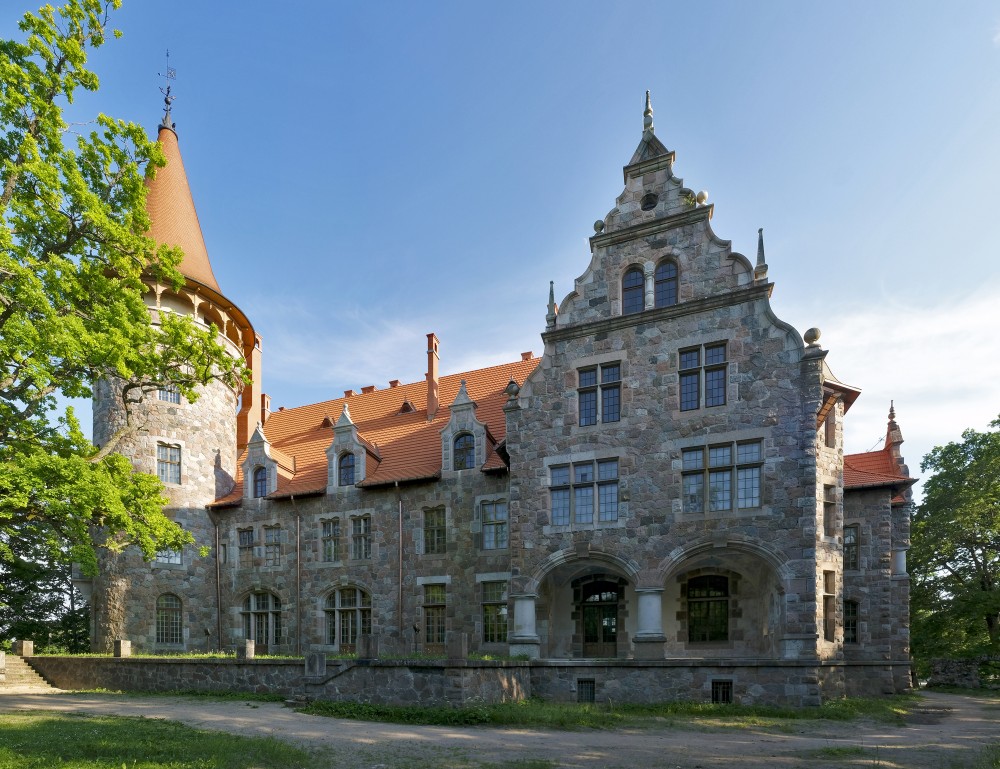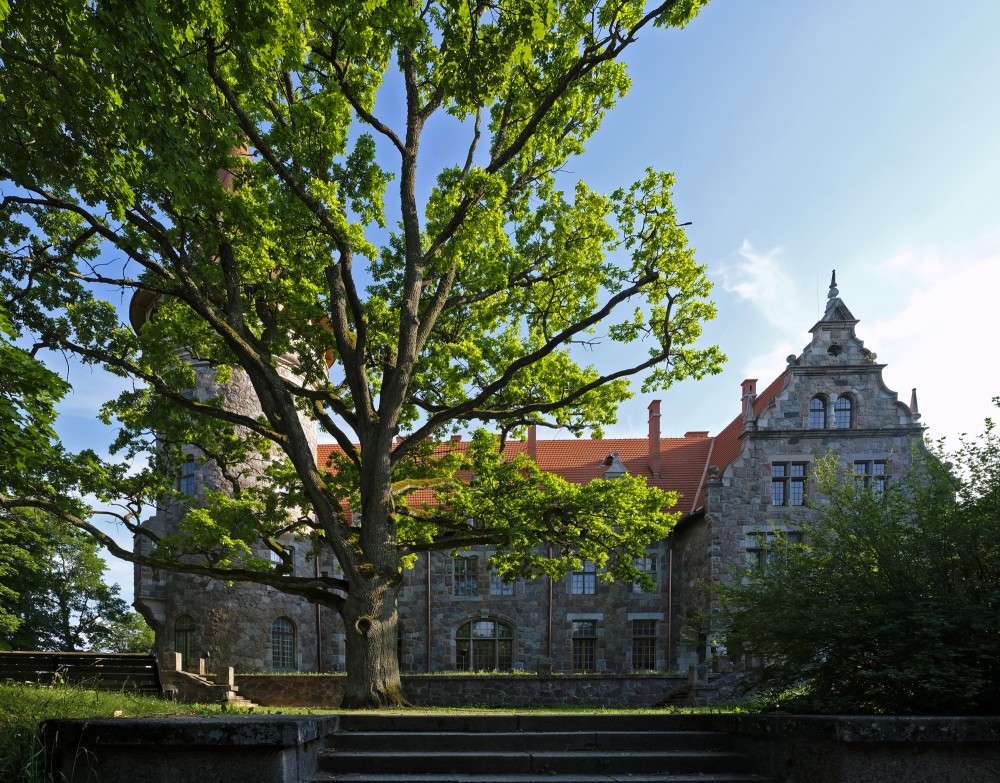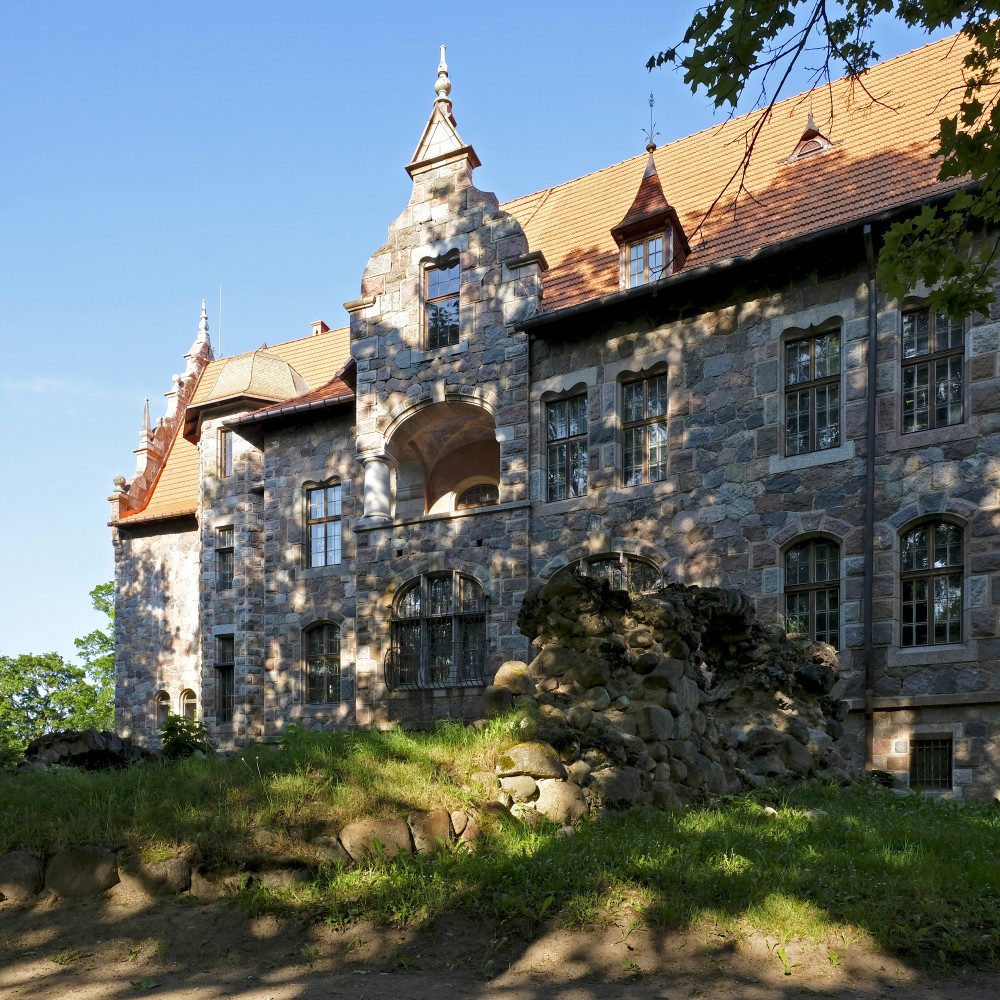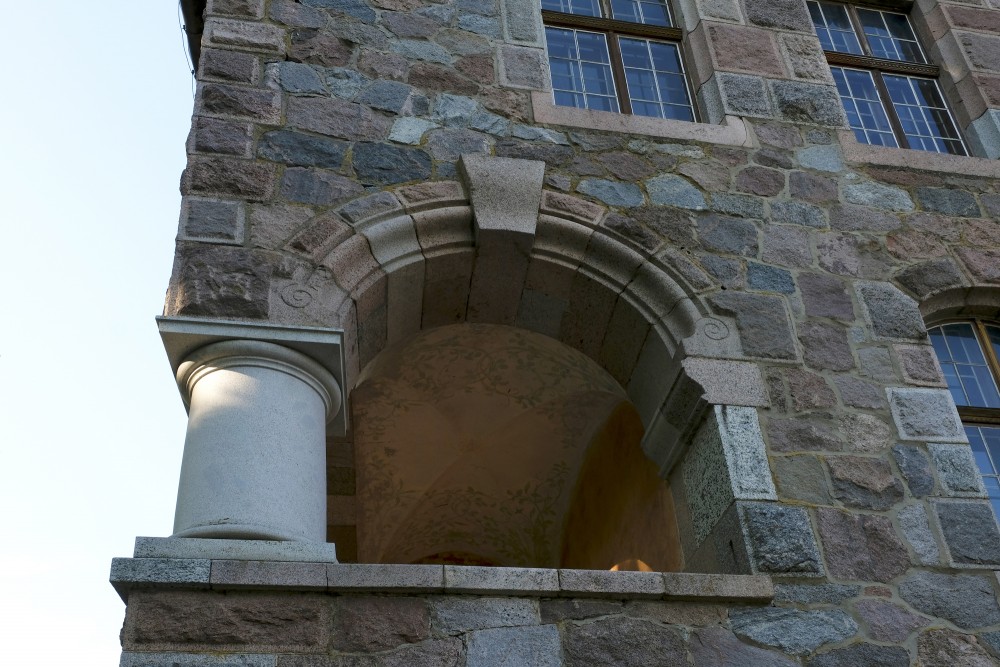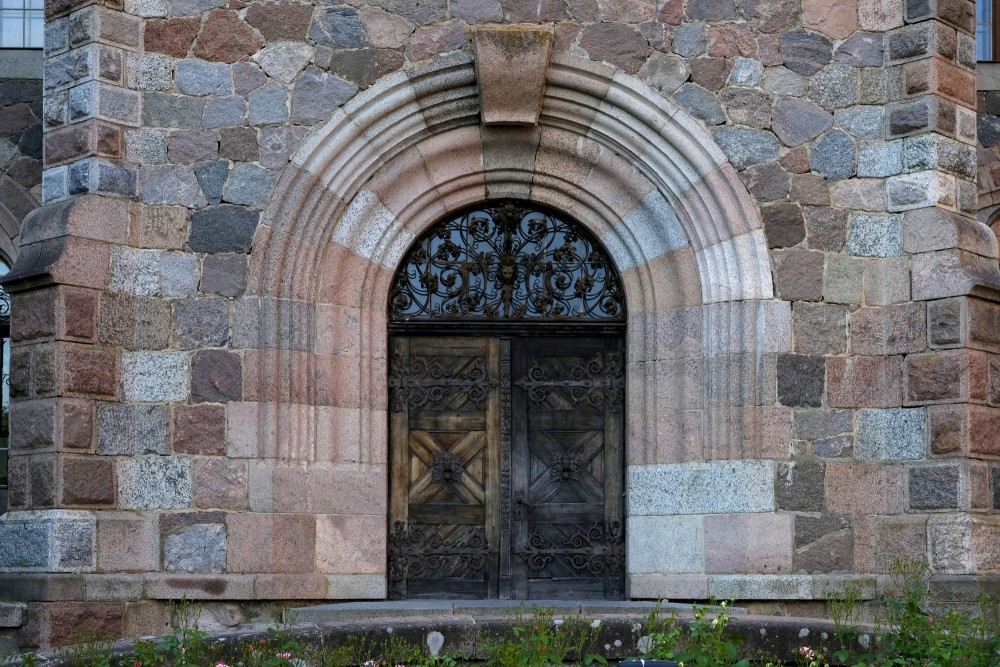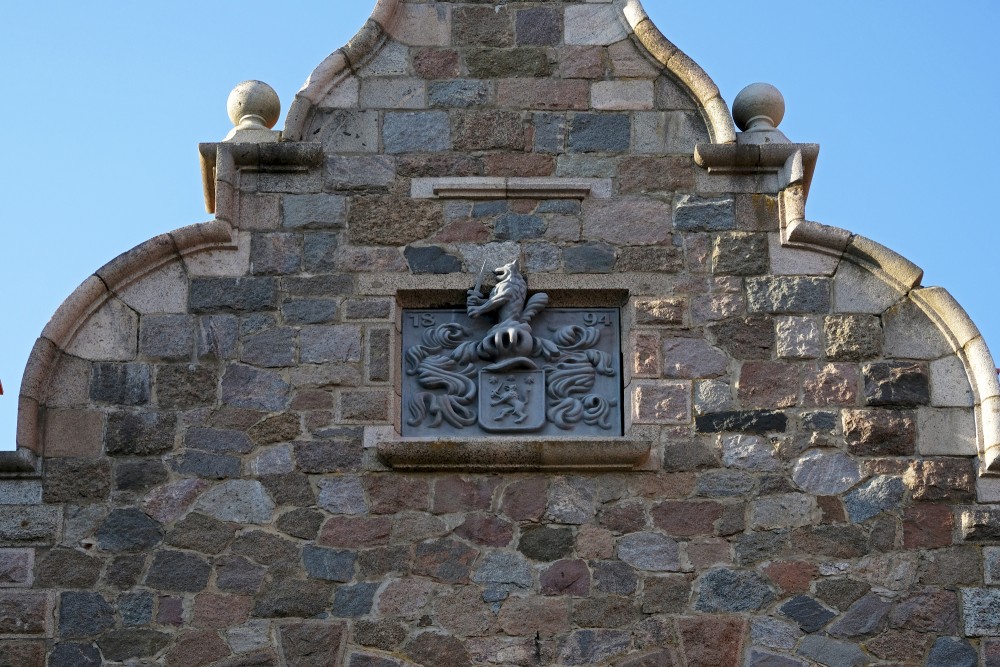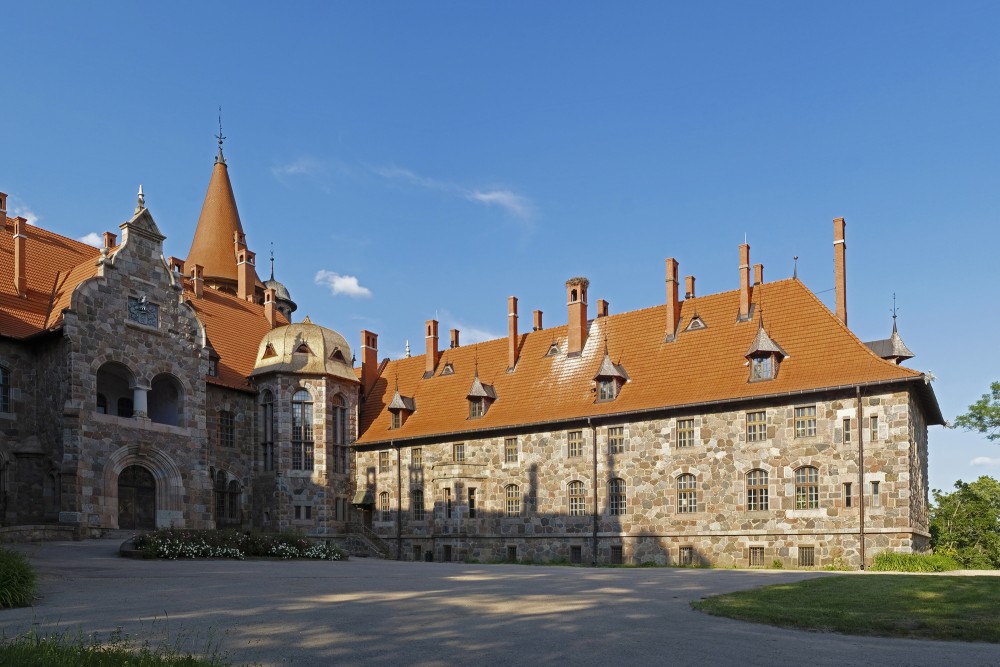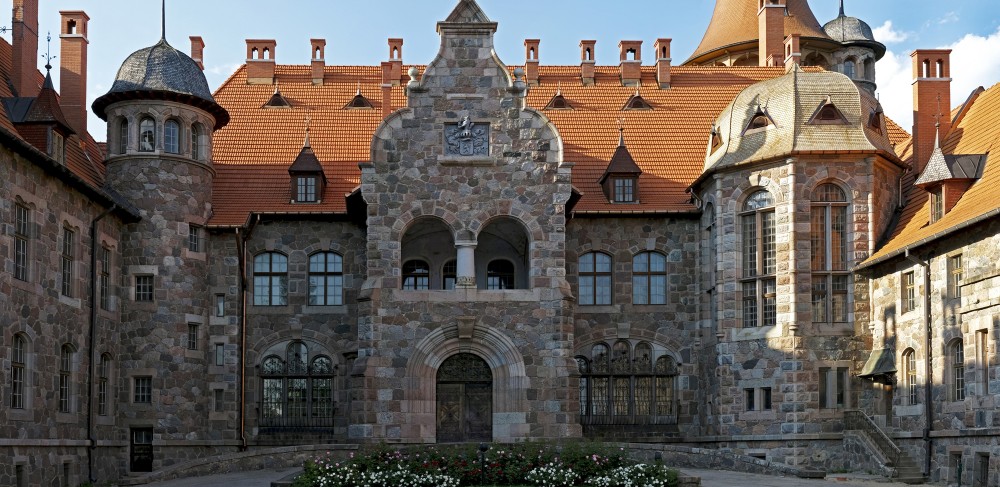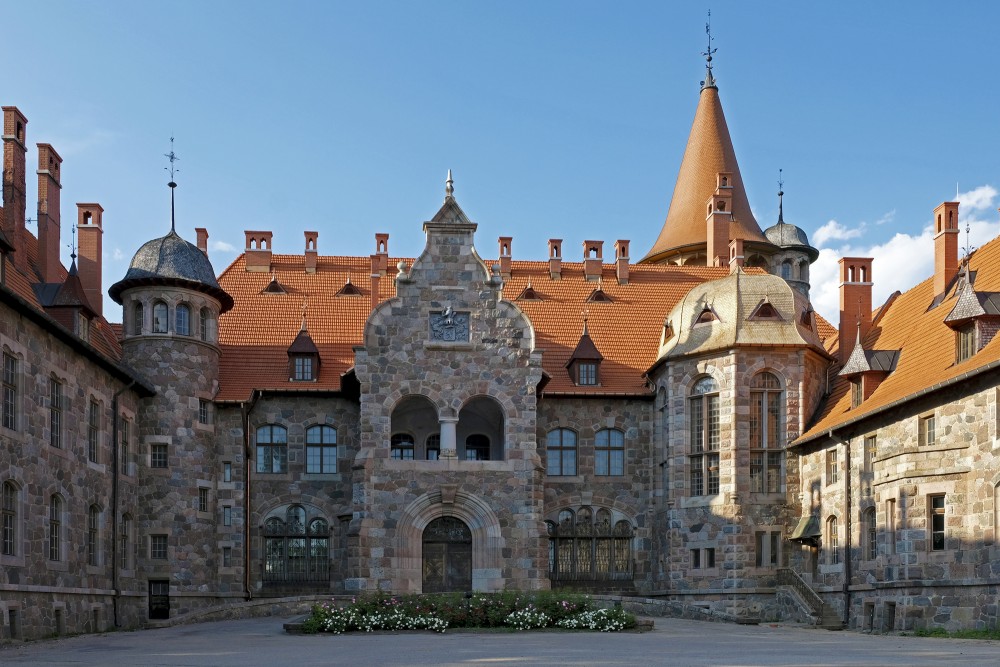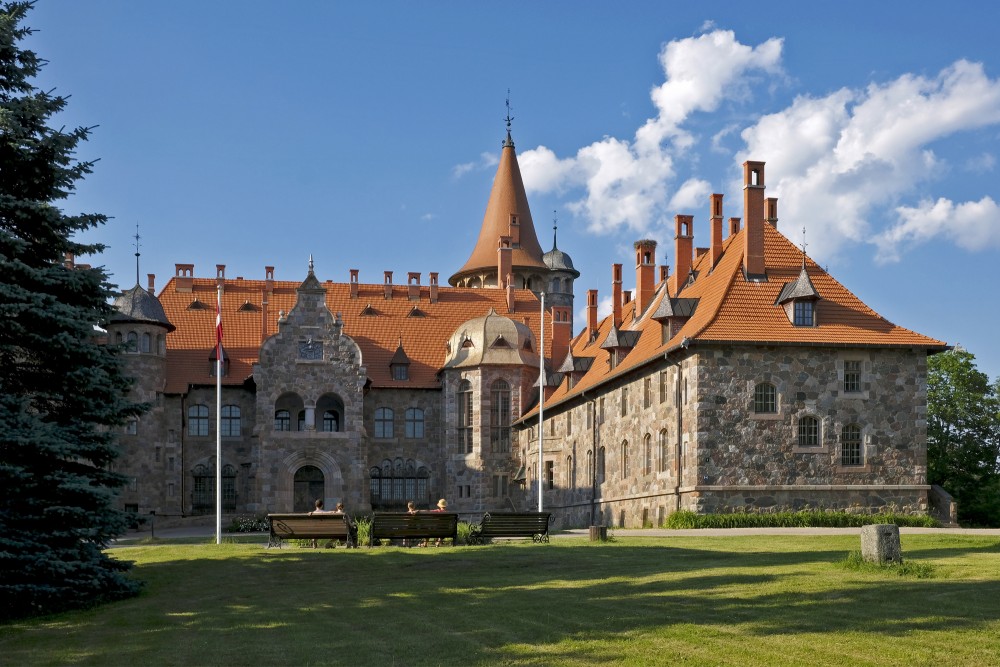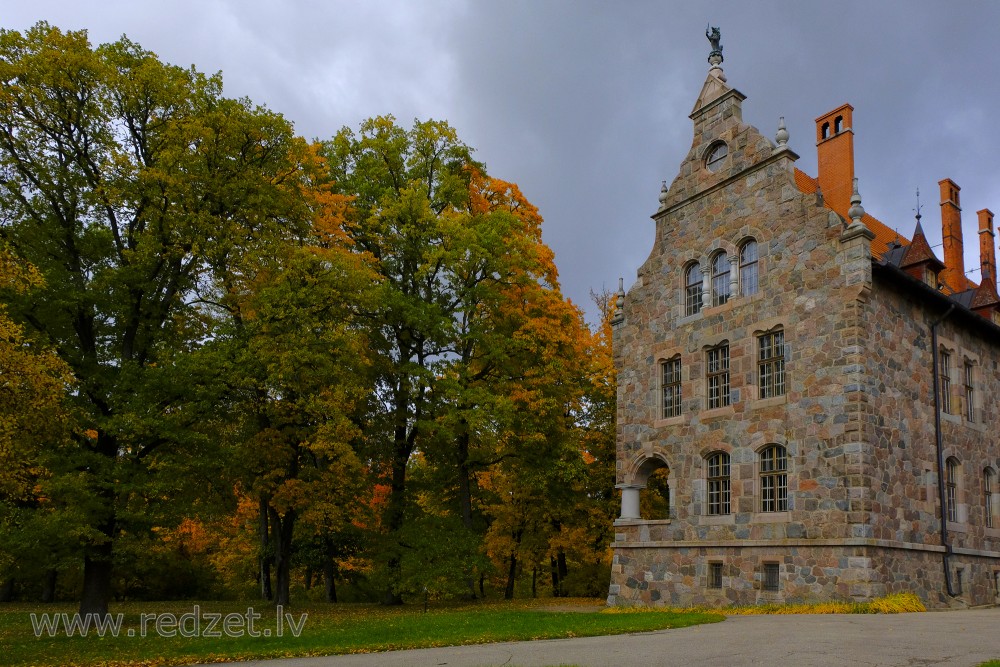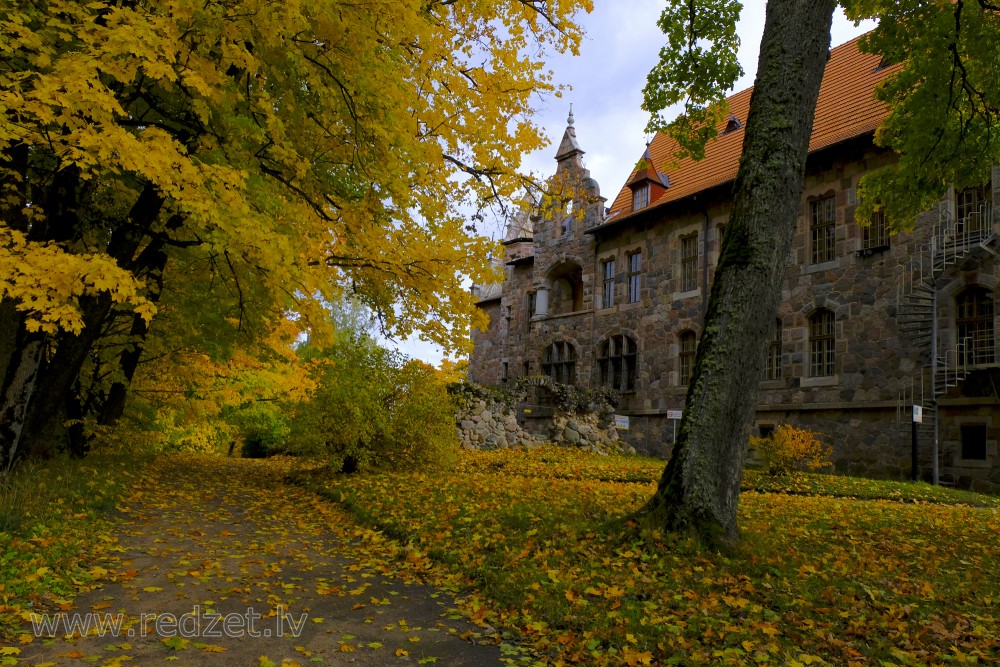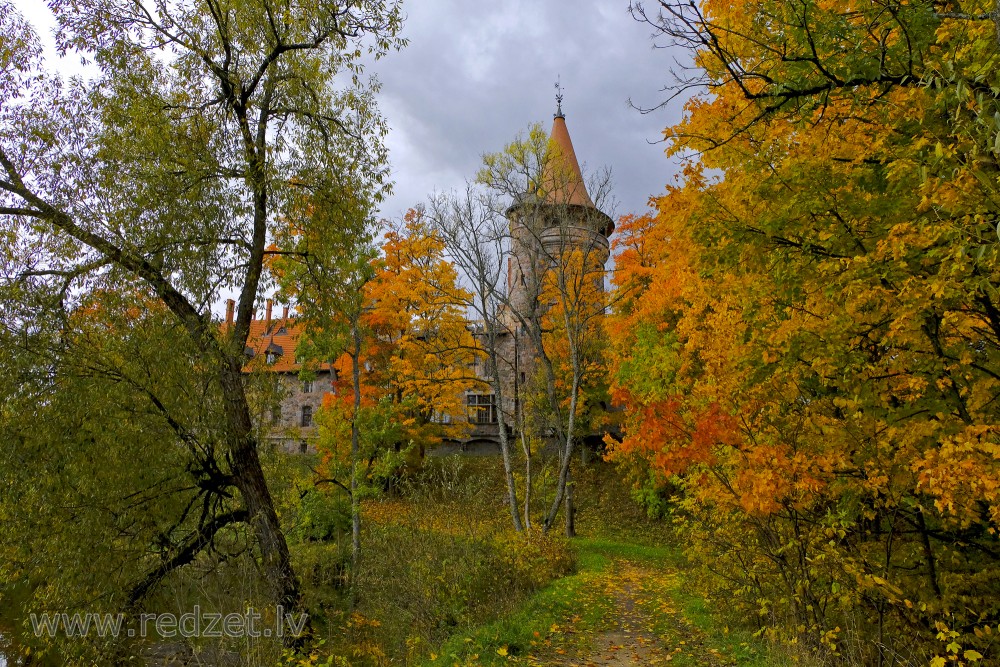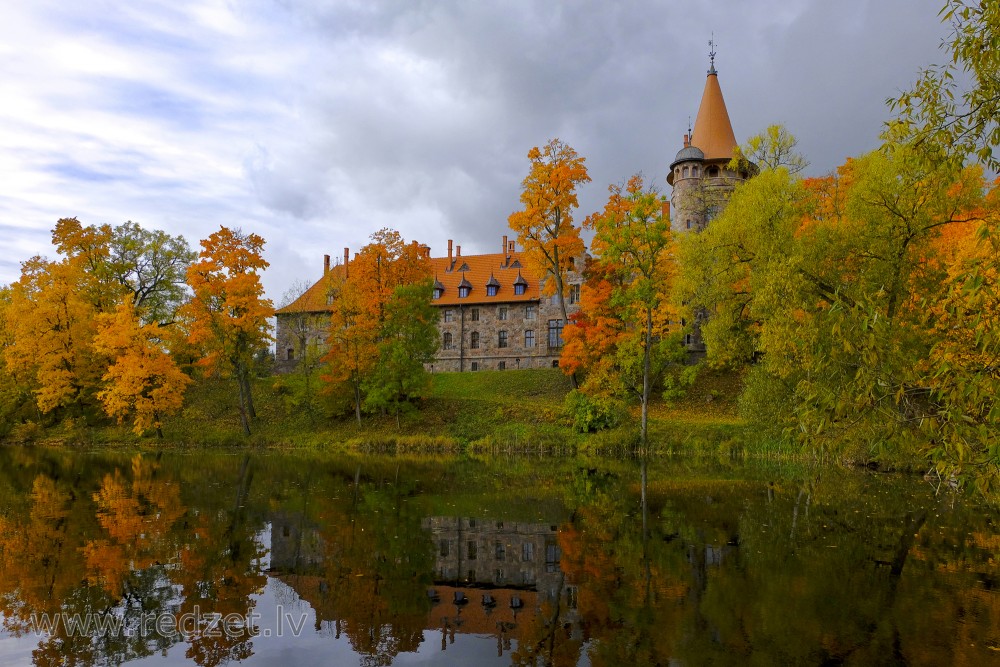Cesvaine Palace
Cesvaine Palace (Latvian: Cesvaines pils; German: Schloss Seßwegen) is located in the town of Cesvaine, Latvia in the Madona District. Next to the palace are the old medieval castle ruins, remains from the old bishops castle.
History
Cesvaine Palace was built in 1896 for the German baron Emil von Wulf (not to be confused with the von Wolf baronial family). Authors of the project were architects Hans Grisebach and August Dinklage from Berlin. The palace is built in the late Tudor Neo-Renaissance style. It is a very impressive palace in this style.
At the end of the 19th century, Germany abandoned the reproduction of old German prototypes and turned to England in search of inspiration, namely to late Tudor-style architecture. The style had preserved certain Gothic elements. Picturesque frames, towers and turrets of different forms and sizes, high decorative chimneys and steep roofs were all characteristic features of the style.
Cesvaine Palace is an impressive construction representing this trend in Latvia. Abandoning forms of the German Renaissance, Griesebach created an unusual, noble and welcoming construction. It is a romantic and picturesque building, and its architecture harmonizes with the landscape. The palace is built of stone, skilfully using the colour and texture of the material. The architect has applied the principle of contrast- the facade is enriched by balconies and impressive pediments. The round tower with a helmet appears to be a successful addition. The building is renowned not only for its size and frame, but also for the quality of construction. The facades of the palace is made in the medieval style, so the palace leaves the impression of a medieval fortification.
The palace has survived all revolutions and wars of the twentieth century, so interiors were almost in perfect condition. Unfortunately in 2002 the palace suffered heavily in a fire. All of the roof and second floor was destroyed and the first floor was seriously damaged. But, many interior elements survived and will be restored. Although restoration works has started, due to the lack of finances they are proceeding very slowly. The last few decades there was a local secondary school housed in the palace.
en.wikipedia.org
Surrounded by a romantic park and ancient manor buildings, Cesvaine Palace, a sculpture carved in stone, raises its towers to the sky. The palace of Adolf von Wulf is considered to be one of the brightest architectural achievements of the 2nd half of the 19th century. It is the masterpiece of eclecticism that unites architecture, sculpture, metalwork and painting.
Cesvaine Palace is a national architectural monument and since 1997 it has been included into the list of European Cultural Heritage.
Within the action "Visit Castles and Palaces in Latvia" the palace was awarded the honorary title of a "Dream Palace".
The palace was built between 1893 and 1896. Since 1919 there was a school housed in the palace but in 2002 a fire destroyed the roof of the palace. A new secondary school was built in Cesvaine and the palace is gradually recovering its initial appearance. In 2003 the roof of the left wing of the palace was restored, the tower of the palace was restored in 2006. Restoration works continue.
....
At the moment Cesvaine Palace houses Cesvaine Music and Art School, Municipal Agency "Cesvaine Tourism Centre" and Cesvaine Museum.
....
You can see both restored and not restored parts of the palace, walk around a large cellar and go up to the watchtower. We offer guide services and excursion programmes for children and pupils. Just married and wedding guests are offered to use the premises of the palace for unforgettable first wedding waltz, clanging glasses with champagne and enjoying palace music.
www.cesvaine.lv/en




